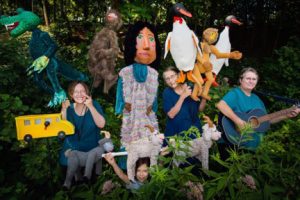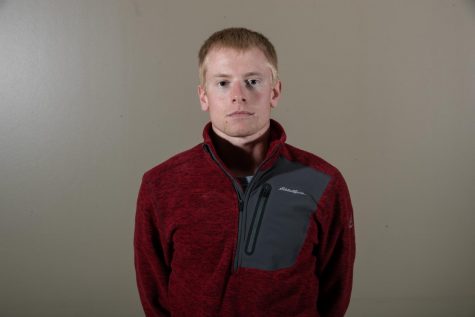Stanley Museum of Art unveils plans for a student-centric model
Lauren Lessing, recently appointed Director of the Stanley Museum of Art, shares her vision for a welcoming community space that showcases all forms of art.
The Stanley Art Museum construction site is seen on the University of Iowa campus on Thursday, September 17, 2020. According to the University of Iowa website for the museum, construction began in 2019 and is slated for completion in winter of next year.
September 17, 2020
After the 2008 flood uprooted the University of Iowa’s previous art museum, the exhibits were in need of a new home.
This year, the beginning stage of rebuilding are underway. The Stanley Museum of Art’s grounds, located next to the Main Library on campus, were ceremonially broken in June. Construction began in late August, and despite complications caused by COVID-19, the $50 million, 63,000 square-foot building is expected to be completed in December of 2021 as originally planned.
Lauren Lessing, who became the museum’s director in July, said she wants the museum to be used by all community members, not just typical “museum-goers.”
“I think art museums can be seen as citadels,” Lessing said. “You never really know who’s making what decisions, and it’s very separate from the general public. But that’s not the way I want to operate this museum. I want to have a close connection to the campus communities and the larger Iowa City communities to work together to make decisions.”
In a Zoom seminar about the museum’s plans, Rod Lehnertz, senior vice president of finance operations and senior leadership, said Lessing was hired for the position because of their shared vision of incorporating student needs into the museum.
RELATED: Stanley Museum of Art continues fundraising efforts
Lessing is working closely with a campus counsel made up of students who are interested in helping plan what kinds of art will be on display and what kind of events will take place. She also plans to work with diversity initiative counsels on campus to make sure all students feel represented and included.
The museum director said that in order to best serve everyone, the planning committee has been mindful of how to accommodate students with visual impairments, hearing problems, and intellectual disabilities.
“I think being on the campus of a Research One university that actually has a center for people with disabilities has really situated us in a position to lead,” Lessing said. “Change often happens first in university museums, and bigger museums pick up on them later.”
The lobby of the museum is not meant to be a quiet space, as many typical art museums often are, she said. Lessing added that she hopes to create an environment where every student feels welcome to converse and enjoy a cup of coffee from the space’s coffee cart.
“It’s the act of looking at art and having a conversation about it that makes art really come alive,” she said. “I don’t want students to be shushed or ushered out.”
Along with that initiative, Lessing also wants live performances to take place in the lobby. Improv shows, musical performances, and theater events are all possibilities she foresees.
Ultimately, Lessing said she hopes to showcase art that will make a real difference in students’ lives.
“Art can be a great comfort,” she said. “But art can also arouse us to make great change. We’re very fortunate to have both kinds of art here.”
Students can also literally assure they are part of the museum by participating in a virtual wall signing.
Ordinarily, community members would be able to sign the beams of the building in person. Because of the pandemic, a public signing event is not possible. However, the museum currently offers a virtual alternative where people can submit their names and a brief message to an online form, which will later be added to the structure during construction.
While they won’t be visible after construction, the signers will know their names are forever within the building’s frame.
Dana Larson, communications director at the UI Center for Advancement, said the wall signing is a way to celebrate in the face of shared difficulty.
“Like everyone else, the museum is facing challenges,” Larson said. “They really want to share this project with the community and have everyone feel included in this project, but there are challenges with COVID. The virtual wall signing is a way to help people feel connected to the project. When the building opens, we want everyone to feel welcome and come celebrate.”

















